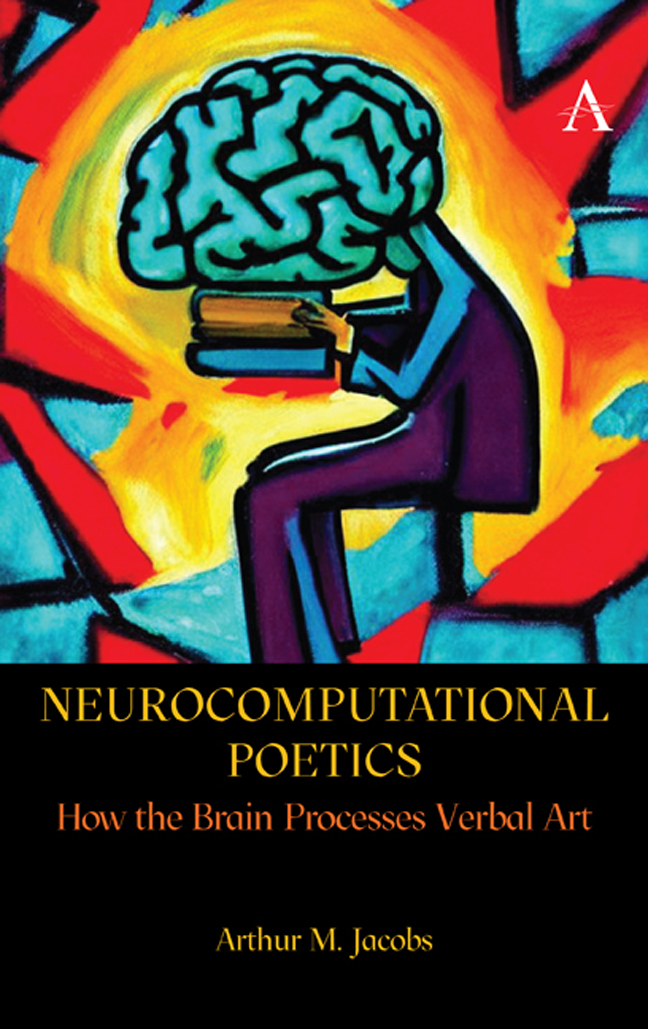Book contents
- Frontmatter
- Contents
- Acknowledgements
- Dedication
- Preface
- 1 Introduction: The Two Boons of an Unnatural Daily Activity
- 2 Models and Methods
- 3 Text Analysis
- 4 Reader and Reading Act Analysis
- 5 Computational Poetics I: Simple Applications
- 6 Computational Poetics II: Sophisticated Applications
- 7 Neurocomputational Poetics I: Upper Route Studies
- 8 Neurocomputational Poetics II: Lower Route Studies
- 9 Conclusions
- References
- Index
6 - Computational Poetics II: Sophisticated Applications
Published online by Cambridge University Press: 01 March 2024
- Frontmatter
- Contents
- Acknowledgements
- Dedication
- Preface
- 1 Introduction: The Two Boons of an Unnatural Daily Activity
- 2 Models and Methods
- 3 Text Analysis
- 4 Reader and Reading Act Analysis
- 5 Computational Poetics I: Simple Applications
- 6 Computational Poetics II: Sophisticated Applications
- 7 Neurocomputational Poetics I: Upper Route Studies
- 8 Neurocomputational Poetics II: Lower Route Studies
- 9 Conclusions
- References
- Index
Summary
In the previous chapter, relatively simple computational analyses were discussed without any comparison to human response data. In this chapter, I compare the predictions of more sophisticated theoretical and computational models to human ratings collected during the reading of entire chapters, books and poem collections.
Story Analysis I: Plots
After having discussed the complexities of computational analyses of multiword expressions in the last chapter, it is now time for considering the biggest text units readers can process: stories, novels and poems. Two superfeatures playing a major role at this macrostructural level of the reading act are plots and characters, discussed in the first two sections of this chapter. Narratologists and literary critics still continue to debate on the exact definition of the term plot. For the present purposes, I adopt a structuralist position according to which plot is considered a pattern that yields coherence to the narrative by enchaining story events in a limited number of typical sequences. As we will see, such prototypical plotlines can well be identified via computational analyses.
Plot, Event Detection and Sentiment Analysis
Plot is about the causal and temporal patterns arranging the events in a story and how this arrangement in turn facilitates identification of their motivations and consequences. This ‘plot as global structure view’ facilitates the application of sentiment analysis to the identification of story plotlines and it is also closely linked to the psychological concept of situation model building. Abstractly, a story can be represented as a partially specified trajectory in situation-state space: a temporally ordered sequence of events. Story comprehension then can be seen as the problem of inferring the most probable missing features of this trajectory, a cognitive process which is driven by affective-aesthetic processes of suspense or surprise. If the incoming information from the text is consistent with the situation model currently under construction (e.g. shares characters and locations), it is mapped onto the current model. If it does not overlap with the current model, a reader will shift the focus of attention to begin building a new structure that satisfies the constraints of the current information.
As outlined in Chapter 2, readers’ brains code these in the form of situation models with the dimensions:
• Time. One event relative to another, and to the time of narration.
• Space. The spatial relations between events or protagonists in the situation model.
• People and objects.
- Type
- Chapter
- Information
- Neurocomputational PoeticsHow the Brain Processes Verbal Art, pp. 141 - 174Publisher: Anthem PressPrint publication year: 2023



